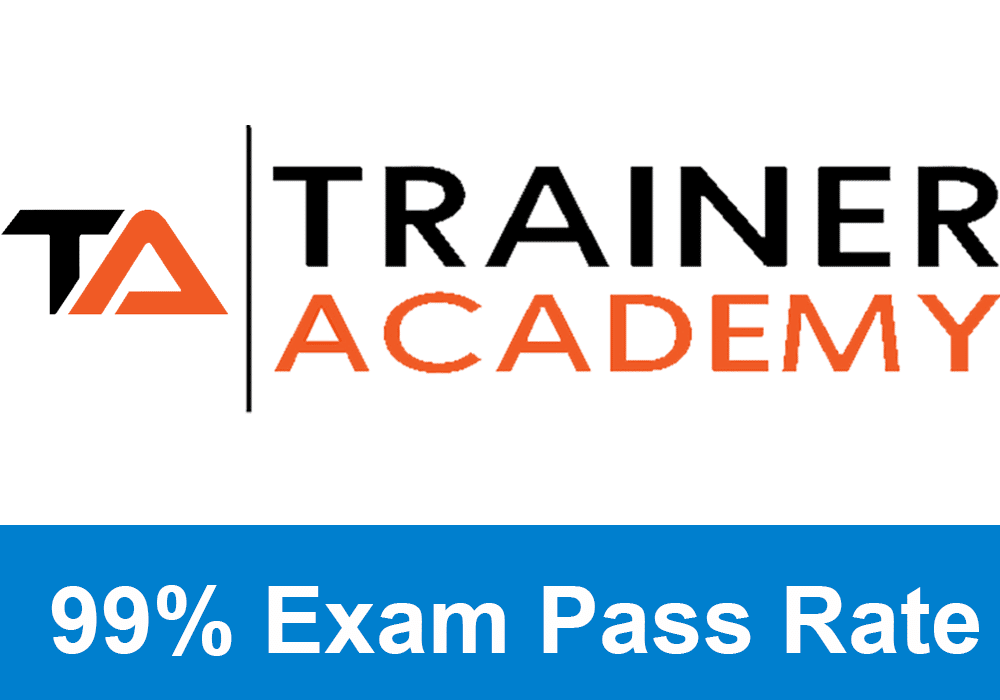If you have not signed up for the NASM FNS yet, you can do so here to save 20%.
If you are unsure which nutrition certification is right for you, I recommend that you take the quiz or check out my article on the top nutrition certifications. This is especially true because the FNS is slightly out of date.
Important definitions to memorize for Chapter 5 of the NASM FNS
Adipocytes ~ Fat cells
Adipose Tissue ~ Body fat tissue
Alpha-Linolenic Acid ~ a vital omega-3 fatty acid (PUFA) that contains eighteen carbon atoms and three carbon-carbon double bonds (18:3)
Chain Length ~ the number of carbons that a fatty acid tail contains. Foods contain fatty acids with chain lengths of four to twenty-four carbons, and most have an even number of carbons.
Cholesterol ~ A waxy lipid (sterol) whose chemical structure contains multiple hydrocarbon rings
Choline ~ A nitrogen-containing compound that’s a part of phosphatidylcholine, a type of phospholipid. Choline is additionally a part of the neurotransmitter acetylcholine. The body synthesizes choline from the essential amino acid methionine.
Chylomicron ~ a large lipoprotein particle synthesized in intestinal cells following the absorption of dietary fats. A chylomicron has a central core of triglycerides and cholesterol enclosed by phospholipids and proteins.
Cis fatty acid ~ Unsaturated fatty acid in which the hydrogens encompassing a double a are both on the identical side of the carbon chain, causing a bend within the chain. Most naturally occurring unsaturated fatty acids are cis fatty acids.
Conjugated linolic acid ~ A polyunsaturated fatty acid in which the position of the double bonds has moved, so one bond alternates with 2 double bonds.
Desaturation ~ Insertion of double bonds into fatty acids to convert them into new fatty acids
Exclusive PTP CPT Offers |
||
|---|---|---|
Gold Standard Cert | Most Popular Cert | Best Study Materials |
A Good Option | A Good Option | Best CPT for you?  |
Diglycerides ~ Molecules composed of glycerol combined with 2 fatty acids
Eicosanoids ~ a class of hormone-like substances synthesized in the body from long-chain fatty acids
Elongation ~ Addition of carbon atoms to fatty acids to elongate them into new fatty acids
Essential Fatty Acids ~ The fatty acids that the body requires but cannot synthesize and that should be obtained from the diet.
Ester ~ A chemical combination of an organic acid (e.g., fatty acids) and alcohol. Once hydrogen from the alcohol combines with the acid’s hydrogen and oxygen, water is discharged and an ester linkage is created. A triglyceride is an ester of 3 fatty acids and a glycerol backbone.
Esterification ~ A condensation reaction within which an organic acid (e.g., fatty acids) combines with alcohol with the loss of water, making an ester bond
Fat Replacers ~ Compounds that imitate the functional and sensory properties of fats contain less bioavailable energy than fats.
Fatty Acids ~ Compounds containing a protracted hydrocarbon chain with a carboxyl group (COOH) at one end and a methyl group (CH3) at the opposing end
Glycerol ~ alcohol that contains 3 carbon atoms, each of which has an attached hydroxyl (-OH). It forms the backbone of mono-, di-, and triglycerides.
High-Density Lipoproteins (HDL) ~ The blood lipoproteins that contain high levels of protein and low levels of triglycerides. Synthesized primarily within the liver and small intestine, HDL picks up cholesterol discharged from dying cells and other sources and transfers it to other lipoproteins.
Hydrogenation ~ A chemical reaction during which hydrogen atoms are added to carbon-carbon double bonds, changing them to single bonds. Hydrogenation of monosaturated and unsaturated fatty acids reduces the number of double bonds they contain, thereby making them more saturated.
Hydrophilic ~ readily interacting with water (literally, “water-loving”). Deliquescent compounds are polar and soluble in water.
Exclusive PTP CPT Offers |
||
|---|---|---|
Gold Standard Cert | Most Popular Cert | Best Study Materials |
A Good Option | A Good Option | Best CPT for you?  |
Hydrophobic ~ Insoluble in water
Lipoprotein ~ Complexes that transport lipids within the human blood. They comprise a central core of triglycerides and sterols encircled by a shell composed of proteins and phospholipids. The various forms of lipoproteins differ in size, composition, and density.
Lipoprotein lipase ~ the main accelerator liable for three hydrolyses of plasma triglycerides
Low-Density Lipoproteins (LDL) ~ The cholesterol-rich lipoproteins / adipoproteins that result from the bicelles ~ Small emulsified fat packets which can enter enterocytes. The complexes are composed of surfactant molecules orientated with their hydrophobic half facing inward and their hydrophilic half facing outward toward the encompassing aqueous surroundings. Breakdown and removal of triglycerides from intermediate-density lipoprotein within the blood
Monoglycerides ~ Molecules composed of glycerol combined with one fatty
Monounsaturated fatty acid ~ A lipid in which the carbon chain contains one double bond (either cis or trans)
Nonessential Fatty Acids ~ The fatty acids your body will build once required. it’s not necessary to consume them in the diet
Omega-3 Fatty Acids ~ Any unsaturated fatty acyl in which the primary double bond starting from the methyl group (CH3) end of the molecule lies between the third and fourth carbon atoms
Omega-6 fatty acid ~ Any unsaturated fatty acyl in which the primary double bond starting from the methyl group (CH3) end of the molecule lies between the sixth and seventh carbon atoms
Omega-9 fatty acid ~ Any unsaturated fatty acyl in which the primary double bond starting from the methyl group (CH3) end of the molecule lies between the ninth and tenth carbon atoms
Oxidation ~ oxygen attaches to the double bonds of unsaturated fatty acids. Rancid fats are oxidized fats.
Phosphate group ~ A chemical functional group (-PÒ) on a bigger molecule where the phosphate atom is single-bonded to each of the four oxygens and the other bond of 1 of the oxygens is connected to the remainder of the molecule. Usually, hydrogen atoms are connected to oxygens. Typically there are double bonds between the phosphate and an oxygen atom.
Phytosterols ~ Sterols found in plants. Phytosterols are poorly absorbed by humans and scale back the enteric absorption of sterol. They have been used as sterol-lowering food ingredients.
Polyunsaturated fatty acyl ~ A fatty acid molecule in which the carbon chain contains 2 or more double bonds.
Saturated Fatty Acids ~ A fatty acyl fully filled by protons with all carbons within the chain coupled by single bonds.
Squalene ~ A cholesterin precursor found in whale liver and plants.
Sterols ~ A class of lipids that has cholesterol. Sterols are hydrocarbons with 3 rings in their structures.
Subcutaneous Fat ~ Fat stored beneath the skin
Trans Fatty Acids ~ Unsaturated fatty acids in which the hydrogens encompassing a double bond are on opposite sides of the carbon chain. This straightens the chain, and therefore the fatty acid becomes more solid.
Triglycerides ~ Fats composed of 3 fatty acyl chains joined to a glycerol molecule.
Unsaturated fatty acid ~ A fatty acyl chain in which the carbon chain contains one or a lot of double bonds
Very low-density Lipoproteins (VLDL) ~ The triglyceride-rich lipoproteins created in the liver. Very Low-Density Lipoprotein enters the blood and is gradually acted upon by lipoprotein lipase, releasing triacylglycerides to body cells.
Visceral Fat ~ Fat stores that cushion body organs

 Have a question?
Have a question? 




![NASM OPT Model - Complete [year] Breakdown for Fitness Professionals 11 NASM OPT Model in action - client performing exercises following the NASM OPT model.](https://www.ptpioneer.com/wp-content/uploads/2024/04/NASM-OPT-Model-in-action.png)
![Single Leg Squat Assessment NASM Guidelines for [year] 12 single leg squat assessment - client performing a single leg squat assessment in a fitness setting under trainer supervision](https://www.ptpioneer.com/wp-content/uploads/2024/03/single-leg-squat-assessment-1.png)

![LPHC NASM Breakdown ([year]) - Lumbo-Pelvic Hip Complex Anatomy 14 Lumbo Pelvic Hip Complex - image of fitness client with a focus on the lumbo pelvic hip complex](https://www.ptpioneer.com/wp-content/uploads/2024/03/Lumbo-Pelvic-Hip-Complex.png)
![SMART Goal NASM Breakdown for [year] 15 SMART Goal NASM - trainer and client sitting down in a fitness setting to discuss goals](https://www.ptpioneer.com/wp-content/uploads/2024/03/SMART-Goal-1.png)
![The [year] Guide to the NASM Davies Test 16 NASM Davies Test - client in push up position touching one hand to another](https://www.ptpioneer.com/wp-content/uploads/2024/03/NASM-Davies-Test.png)

Tyler Read
PTPioneer Editorial Integrity
All content published on PTPioneer is checked and reviewed extensively by our staff of experienced personal trainers, nutrition coaches, and other Fitness Experts. This is to make sure that the content you are reading is fact-checked for accuracy, contains up-to-date information, and is relevant. We only add trustworthy citations that you can find at the bottom of each article. You can read more about our editorial integrity here.